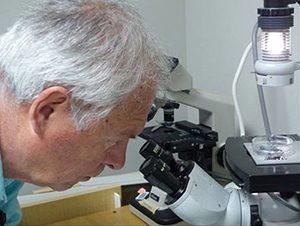Can the outcome of clinical PDT be substantially improved by some specific modulators of cellular stress response?
 Wausau, WI (June 27, 2018) – The insult delivered by photodynamic therapy (PDT) in treated cells is oxidative stress. The main burden threatening survival of PDT-treated cells is proteotoxic damage that jeopardizes proteostasis in these cells. For dealing with this type of proteostasis impairment, cells have developed protection mechanisms operating by signaling networks. Survival and death of PDT-treated cells are defined by the activity of stress signaling networks.
Wausau, WI (June 27, 2018) – The insult delivered by photodynamic therapy (PDT) in treated cells is oxidative stress. The main burden threatening survival of PDT-treated cells is proteotoxic damage that jeopardizes proteostasis in these cells. For dealing with this type of proteostasis impairment, cells have developed protection mechanisms operating by signaling networks. Survival and death of PDT-treated cells are defined by the activity of stress signaling networks.
A recent study published in Lasers in Surgery and Medicine (LSM), the official journal of the American Society for Laser Medicine and Surgery, Inc. (ASLMS) outlines various components of signaling networks that can be engaged in stressed cells with highlighting the emerging aspects relevant to response to PDT. It also demonstrates how the well-known inflammatory/immune response associated with PDT is also based on the activity of stress signaling networks.
The study, conducted by Mladen Korbelik, PhD and titled “Role of cell stress signaling networks in cancer cell death and antitumor immune response following proteotoxic injury inflicted by photodynamic therapy,” was selected as Editor’s Choice in the July 2018 issue of LSM.
“Given that the stress signaling networks determine the outcome of PDT, they have been grossly neglected in PDT research. Perhaps a new fresh angle on looking at PDT can be inspired by reading this review that can lead to major advances in this field,” said Dr. Korbelik.
Dr. Mladen Korbelik has a PhD degree in Biology (1979) received from the University of Zagreb, Croatia. He is a Distinguished Scientist in the British Columbia Cancer Agency in Vancouver, B.C., Canada and a Clinical Professor in the Department of Pathology & Laboratory Medicine (Faculty of Medicine) of the University of British Columbia. He has over 150 published peer-reviewed scientific papers and book chapters. A major focus of Dr. Korbelik’s research since 1987 has been the investigation of the mechanism of antitumor effects of photodynamic therapy (PDT).
Editor’s Choice is an exclusive article published in LSM, the official journal of the ASLMS. View the complete manuscript.
The American Society for Laser Medicine and Surgery, Inc. (ASLMS) is the largest multi-disciplinary professional organization, dedicated to the development and application of lasers and related technology for health care applications. ASLMS promotes excellence in patient care by advancing biomedical application of lasers and other related technologies worldwide. Currently, ASLMS has over 4,000 members, including physicians and surgeons representing more than 51 specialties, physicists involved in product development, biomedical engineers, biologists, nurses, industry representatives and manufacturers. For more information, visit aslms.org.